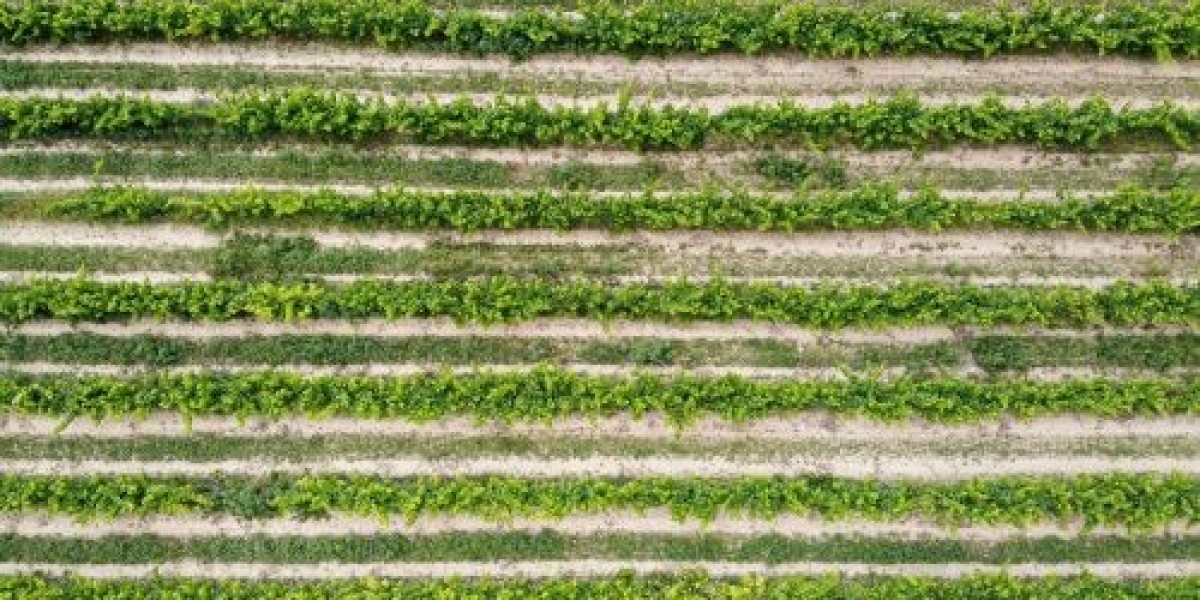As global agricultural practices evolve, the demand for sustainable farming solutions grows. Conventional pesticides, including herbicides, insecticides, fungicides, and miticides, have long been the backbone of crop protection. However, their extensive use has raised concerns about environmental degradation, soil health, and the safety of food products. Farmers and agricultural experts are now adopting eco-friendly alternatives that ensure crop productivity while promoting ecological sustainability.
The Need for Eco-Friendly Pesticide Alternatives
The widespread use of chemical pesticides has significantly contributed to higher crop yields and pest control efficiency. However, their long-term effects on ecosystems, including water contamination, soil degradation, and the decline of beneficial insect populations, are undeniable. Moreover, pests are increasingly developing resistance to synthetic pesticides, making traditional methods less effective over time.
Eco-friendly alternatives address these environmental and health concerns and support sustainable agriculture practices. They focus on maintaining ecological balance while enhancing crop resilience, making them essential for the future of farming.
1. Biological Pest Control: Harnessing Nature’s Predators
Biological pest control is one of the most effective and environmentally friendly agricultural pest management methods. This approach involves introducing natural predators, parasites, or pathogens to control pest populations. For instance, ladybugs are often released to combat aphid infestations, while parasitic wasps can help control caterpillars and other harmful larvae.
This method reduces reliance on synthetic insecticides, supports biodiversity, and minimizes the risk of pests developing resistance, a growing issue with conventional chemicals.
Key benefits of biological pest control include:
Target-specific pest control, reducing harm to beneficial insects.
Enhanced ecological balance within farming environments.
Integrating biological control agents into pest management plans requires careful consideration of the specific crops, local ecosystems, and targeted pests, but the results can be both sustainable and effective.
2. Botanical Pesticides: Plant-Based Protection
Botanical pesticides, derived from plant extracts, offer an eco-friendly alternative to synthetic chemicals. Plants like neem, pyrethrum, and garlic produce natural compounds with insecticidal, fungicidal, and antimicrobial properties. These compounds disrupt the biological functions of pests, reducing their ability to feed, reproduce, or survive.
For example, neem oil is widely used to control various pests, including aphids, whiteflies, and mites. It acts as both an insect repellent and a growth inhibitor. Pyrethrin, extracted from chrysanthemum flowers, effectively targets a range of insect pests without harming most beneficial insects when used correctly.
Botanical pesticides degrade quickly in the environment, reducing the risk of long-term contamination. They can be integrated into organic farming practices, aligning with sustainable agriculture goals. However, many farmers use the NB-80 sticking agent to enhance their effectiveness. This agent helps botanical sprays adhere better to plant surfaces, increasing pest control efficiency even after rain or irrigation.
3. Integrated Pest Management (IPM): A Holistic Approach
Integrated Pest Management (IPM) is a comprehensive strategy that combines multiple pest control techniques to achieve sustainable outcomes. IPM focuses on preventing pest problems through proactive measures such as crop rotation, habitat manipulation, and resistant crop varieties.
The key components of IPM include:
Monitoring and Identification: Regular field inspections help identify pest populations early, allowing for targeted interventions.
Preventive Measures: Crop diversification and soil health management reduce pest habitats and improve plant resilience.
Controlled Intervention: When necessary, IPM employs eco-friendly solutions like biological control agents, botanical pesticides, and mechanical barriers.
IPM reduces the reliance on chemical herbicides, insecticides, fungicides, and miticides, lowering the environmental impact while maintaining crop health. It promotes a balanced ecosystem where natural predators and healthy soil play a significant role in pest suppression.
"The ultimate goal of farming is not the growing of crops, but the cultivation and perfection of human beings." – Masanobu Fukuoka
.This quote reflects the holistic philosophy of IPM, emphasizing harmony with nature rather than domination over it.
4. Organic Soil Amendments: Building Pest-Resistant Crops
Healthy soil is the foundation of sustainable agriculture. Organic soil amendments, such as compost, biochar, and green manure, enrich the soil with nutrients and improve its structure and microbial diversity. This leads to more potent, more resilient plants that are naturally less susceptible to pests and diseases.
Studies show that diverse soil microbiomes can suppress soil-borne pathogens, reducing the need for chemical fungicides. Additionally, organic matter improves water retention, reducing plant stress often attracting pests.
Organic amendments also support the growth of beneficial microorganisms that compete with harmful pathogens, creating a natural form of biological control. This approach aligns with regenerative agriculture principles, emphasizing soil health as a critical component of pest management.
5. Mechanical and Physical Pest Control Methods
Mechanical and physical pest control methods offer simple yet effective ways to manage pests without chemicals. These techniques include traps, barriers, and manual removal to prevent crop pest access.
Standard mechanical methods include:
Sticky Traps: These capture flying insects like whiteflies and aphids, helping monitor and reduce pest populations.
Row Covers: Physical barriers that protect plants from insect pests while allowing light and moisture to reach the crops.
Handpicking: Although labor-intensive, manually removing pests is highly effective for small-scale farms or high-value crops.
Physical methods extend to thermal treatments, such as soil solarization, which uses heat to eliminate soil-borne pests and pathogens. These approaches are instrumental in organic farming systems, where synthetic pesticides are restricted.
6. Biopesticides: Microbial-Based Pest Control
Biopesticides, derived from natural materials like bacteria, fungi, and viruses, represent one of the fastest-growing segments in sustainable agriculture. These products target specific pests, reducing the risk of harming beneficial insects, wildlife, and humans.
Examples of effective biopesticides include:
Bacillus thuringiensis (Bt): A bacterium that produces toxins lethal to certain insect larvae, commonly used to control caterpillars and beetles.
Beauveria bassiana: A fungus that infects and kills a variety of insect pests through natural biological processes.
Biopesticides degrade quickly in the environment, reducing the risk of chemical residues in food and water sources. They are often used with IPM strategies, enhancing pest control while supporting environmental sustainability.
Frequently Asked Questions (FAQs)
What are the disadvantages of conventional pesticides?
Conventional pesticides can lead to environmental pollution, pest resistance, harm to beneficial species, and potential health risks for humans and animals. Overuse may also degrade soil health over time.
Are eco-friendly pesticides as effective as chemical pesticides?
Eco-friendly alternatives can be as effective when used correctly and integrated into comprehensive pest management plans. They often work best as part of an IPM strategy rather than standalone solutions.
Can eco-friendly pest control methods be used in large-scale agriculture?
Yes, many sustainable pest control methods are scalable and have been successfully implemented in large agricultural operations worldwide, reducing chemical dependency while maintaining high yields.
What is the difference between biopesticides and botanical pesticides?
Biopesticides are derived from microorganisms (bacteria, fungi, viruses), while botanical pesticides come from plant extracts. Both are eco-friendly but target pests through different biological mechanisms.
How can I start transitioning to eco-friendly pest control on my farm?
Begin by improving soil health, introducing biological controls, and gradually integrating IPM practices. Monitoring pest populations regularly will help you determine the most effective eco-friendly strategies for your specific crops.
Beyond the Fields: A New Perspective on Sustainable Farming
As the agricultural landscape continues to shift towards sustainability, eco-friendly pest control methods are no longer optional but essential. Embracing alternatives to conventional herbicides, insecticides, fungicides, and miticides protects the environment and ensures long-term agricultural productivity.
Instead of concluding with final words, consider this an open invitation to explore, experiment, and adapt these eco-friendly solutions in your farming practices. The future of agriculture lies not just in growing more food but in growing food responsibly, preserving the land for generations to come.









